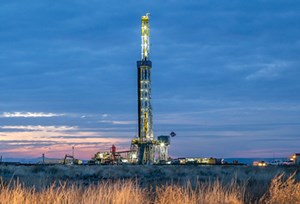Energy Issues
Wading through the news in the first month of the year has left me with the impression that many more issues have arisen, than have been resolved, in the oil and gas industry since New Year’s Day. The issues fall, almost evenly, into the positive and negative categories, but the outlook is, in my opinion, positive. At the lowest level, at least we are moving. Let’s begin with those in the negative category.
Safety: Our safety performance is improving, and that is verifiable. Unfortunately, we still have a way to go. That has been demonstrated several times in the first month of the year. The one incident that caught my eye was the late-January explosion on a Patterson-UTI rig that left five people dead in Oklahoma. It is the deadliest E&P accident in the U.S. since the Deepwater Horizon disaster in 2010. Preliminary analysis indicates that the blowout and subsequent explosion were the result of a BOP failure, as was the case in the Macondo disaster. The well was being drilled for Oklahoma operator Red Mountain.
Declining discoveries: Worldwide, oil and gas companies were expected to discover just 7 Bboe of oil and gas last year, following a disastrous 2016 performance in which the total average discovered conventional resources per month were a measly 580 MMboe. That volume is the lowest volume of discovered resources since the 1940s, according to Rystad Energy, a Norwegian oil and gas consulting services and business intelligence data firm. The decline began in 2010 and is mirrored by a 60% decrease in exploration budgets, the company notes.
Politics and energy (This can be good and bad, as noted a bit later with regard to President Trump’s plan to open the U.S. offshore. Below, we discuss the negative aspects): Globally, oil and gas seem to be used increasingly as a tool for political leverage. This is especially true of Venezuela. The country, with the world's largest reserves base, has been brought to the brink of bankruptcy by the increasing failures of PDVSA, the state oil company that is the country's primary source of revenue. The continuing problem was illustrated recently, when an arrest order was issued by Venezuela’s chief prosecutor for former PDVSA head Rafael Ramirez, on charges of money laundering and embezzlement. The arrest warrant is part of a larger crackdown on alleged corrupt activities within PDVSA that began a year ago. It is difficult to forecast where the internal disruption within the country, and within PDVSA, might end.

And, now for some positive issues. Listed below are things noted in the first month of the year that I believe bode well for the industry, as opposed to those listed above that weigh negatively upon us.
Elation in the PB: The Permian basin, in western Texas and eastern New Mexico, is the largest oil and gas deposit in the U.S. It has been a primary focus of the industry since the 1930s. There have been ups and downs, with the industry streaming in and out as fast as it could. The area is now in a major upturn. Lately, it has been marked by the return of the majors, who were once a force majeure in the area, but they fled, due to falling production and declining oil prices. Nevertheless, discoveries of massive, previously unidentified additional reserves, combined with prices lower than those for many offshore developments, have brought them rushing back. And that is despite lease prices rising to incredible levels.
Trump opens U.S. offshore: President Donald Trump last April signed an executive order that directed Interior Secretary Ryan Zinke to evaluate the five-year moratorium issued by former President Barack Obama, prohibiting oil and gas drilling in some U.S. federal waters in the Atlantic and Pacific oceans, the Gulf of Mexico and in the Arctic. The Department of Interior’s Bureau of Ocean Energy Management (BOEM) eventually will have proposals that will only be in the draft stage and opened up for public comment.
The first of three proposals for 2019–2024, the Draft Proposed Program, was released on Jan. 4. It will be followed by a 60-day comment period. A formal proposal is expected in late 2018, followed by another 90-day comment period. A proposed final program for the lease isn't expected until late 2019. Approval would come 60 days after that. The National Ocean Industries Association estimates the Atlantic, alone, holds about 4.7 Bbbl of oil and 37.5 Tcf of gas, although those estimates are based on seismic surveys from more than 30 years ago.
Global offshore is strong. While the U.S. Gulf of Mexico’s continued development may be hamstrung by lower costs and the increasing production of onshore shale, the offshore market globally is going well. That is reflected in an interesting sidenote, courtesy of London-based VesselsValue that notes an increase in value for a five-year-old jackup in the international market. That value has “increased 36% from January 2017, when a vessel was worth $69.9 million, to $95.14 million today.” The increase in value is driven primarily by the increase in oil prices.
Both lists could go on. But, the point is that, despite a number of issues that must be solved, things are starting to move nicely for the global upstream industry. ![]()

- Advancing offshore decarbonization through electrification of FPSOs (March 2024)
- Subsea technology- Corrosion monitoring: From failure to success (February 2024)
- U.S. producing gas wells increase despite low prices (February 2024)
- Executive viewpoint: TRRC opinion: Special interest groups are killing jobs to save their own (February 2024)
- U.S. drilling: More of the same expected (February 2024)
- U.S. oil and natural gas production hits record highs (February 2024)


